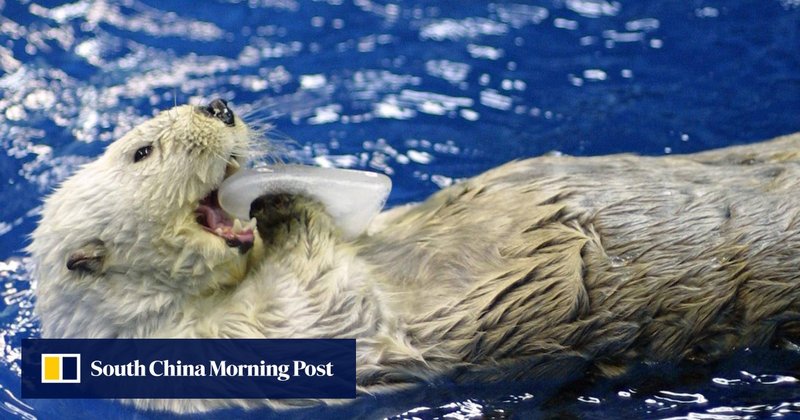
So, how do these little marine mammals manage to keep warm in freezing waters, find food, and avoid predators? The secret lies in their unique adaptations, social behaviors, and diets. Let’s dive into the fascinating world of sea otters and explore how they thrive in such tough conditions.
The Power of Insulation: Thick Fur
One of the first things you notice about sea otters is their luxurious fur. It’s not just for show; this fur is absolutely vital for their survival. Here’s the thing: unlike other marine mammals, sea otters don’t have blubber to insulate them against the cold. Instead, they rely on a thick coat of fur that can have up to a million hair follicles per square inch!
This dense fur traps air, creating a layer of insulation that keeps them warm even in icy waters. When you think about it, it’s like wearing a super cozy sweater, but one that’s designed to keep you buoyant while you swim. And here’s the kicker: otters groom their fur regularly, making sure it remains clean and fluffy. If their fur gets matted, it loses its insulating properties, which could put their lives at risk.
Moreover, the fur acts as a waterproof barrier. By keeping moisture out, sea otters can maintain their body heat. This adaptation is vital for their survival since they spend most of their lives in the water.
Finding Food: A Specialized Diet
Sea otters are often called the “gardens of the sea” because of their important role in maintaining underwater ecosystems. They primarily feast on sea urchins, crabs, clams, and fish, but their foraging techniques are what really stand out. Unlike many other animals, otters use tools to help crack open hard-shelled prey. They’ll dive to the ocean floor, collect a rock, and then smash it against shells to get to the tasty meat inside.
This clever tool use is fascinating and shows just how adaptable these creatures are. However, their foraging isn’t just about finding food for themselves; it also helps control the population of sea urchins. When otters eat urchins, they prevent these spiny creatures from overgrazing kelp forests, which are crucial habitats for many marine species.
Honestly, without sea otters, these ecosystems would be in serious trouble. Their feeding habits promote biodiversity and maintain healthy underwater environments, showcasing how interconnected all life is.
Social Structures: The Importance of Groups
Have you ever watched sea otters floating together in a group? It’s quite a sight! These social animals often form rafts, which can consist of up to 20 otters. Living in groups offers several benefits, especially in harsh environments. For one, they can keep each other warm. When they huddle together, they minimize heat loss and help one another stay comfortable in cold waters.
Moreover, being part of a group provides safety. Sea otters are vulnerable to predators, such as sharks and orcas. By staying close to one another, they create a watchful community that can alert the group to danger. It’s not unlike how we often look out for our friends and family.
These social bonds also enhance foraging success. When otters work together, they can cover more ground when searching for food. Plus, sharing knowledge about good foraging spots means that everyone gets a fair shot at a meal.
Behavioral Adaptations: Unique Survival Strategies
Sea otters have developed some clever behaviors to help them survive in tough conditions. One notable strategy is their ability to dive deep for food. Sea otters can dive up to 300 feet and hold their breath for up to five minutes. This impressive ability allows them to access a variety of prey that other marine mammals may not be able to reach.
Additionally, sea otters are known for their playful demeanor, which isn’t just for amusement. When they play, they’re honing their swimming and foraging skills. For example, sliding down a wet rock can help them perfect their diving timing, which is crucial for catching prey. It’s like they understand that practice makes perfect—even in the wild.
Another behavior worth mentioning is their use of tools. Sea otters will sometimes use a favorite rock they’ve chosen to break shells, which demonstrates a level of problem-solving intelligence that’s quite sophisticated for animals. This ability to adapt and innovate is key to their survival in harsh environments.
Climate Change: A Growing Threat
Unfortunately, sea otters are not immune to the challenges posed by climate change. As ocean temperatures rise, their food sources become endangered, affecting their ability to survive. Warmer waters can lead to the decline of kelp forests, which provide habitat for their prey. This cascading effect illustrates how interconnected ecosystems can be disrupted by human actions.
Pollution is another significant threat. Oil spills can devastate otter populations, as their fur loses its insulating properties when contaminated. Fighting against these challenges requires collective action to protect their habitats and support conservation efforts.
Here’s the thing: if we want to see future generations enjoying the sight of sea otters floating along the coast, we need to advocate for their protection. Supporting organizations that focus on marine conservation can help ensure that these incredible animals continue to thrive.
Sea otters are truly remarkable creatures. From their thick fur that keeps them warm to their social structures that promote survival, they embody resilience in the face of harsh conditions. Their unique adaptations and behaviors not only help them thrive but also play a crucial role in maintaining healthy marine ecosystems.
By understanding how sea otters survive and the challenges they face, we can appreciate the delicate balance of life in the ocean. It’s a reminder that every little creature, no matter how cute, plays a part in the larger environmental picture. Let’s do our best to protect these fluffy guardians of the sea and ensure that they continue to thrive in their natural habitats.

